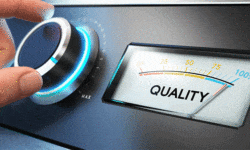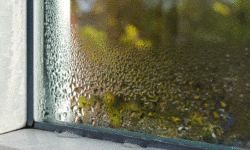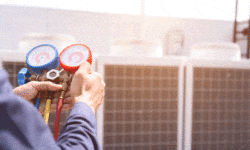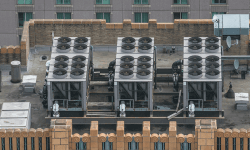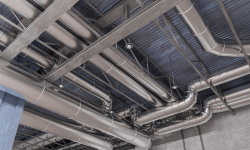A safe, comfortable work environment is important for employee satisfaction. Considering this, you wouldn’t want employees to use broken equipment or have to sit under a leaky ceiling. And, the same goes for air quality. If your office has poor indoor air quality (IAQ), the employees’ health, productivity and overall comfort will be affected. Here are five things you can do to improve indoor air quality in your office building.
Read more →Office humidity is extremely important for every building. If it’s too high or too low, it can affect your health, the building materials, the equipment and more. According to the American Industrial Hygiene Association (AIHA), uncontrolled humidity levels are one of the main factors for poor indoor air quality (IAQ). So, what is the right humidity level?
Read more →For your commercial HVAC system to run at peak efficiency, it needs to be sized just right for your facility. If not, you could face issues, like higher energy bills or temperature fluctuations. Here’s why HVAC system size impacts efficiency and what goes into calculating the size of your HVAC unit.
Read more →Ventilation refers to the circulation and exchange of air as a means of purification. In today’s commercial and industrial buildings, ventilation is essential to diluting and removing pollutants. Throughout history, civilizations have harnessed the power of the wind to ventilate indoor spaces. Think of the Roman atrium or the Persian wind catcher. Over the years, mechanical ventilation systems became the standard in industrial buildings. However, in an effort to reduce hydrocarbon emissions, an increasing number of facilities are returning to a natural ventilation system. Here’s what you need to know.
Read more →If you are interested in generating energy savings in the home, an HVAC economizer may be the way to go. For most homeowners, saving energy is a necessity and upgrading your HVAC system is a great way to see a significant change in overall energy usage. Read on to learn more about the benefits of an HVAC economizer, as well as how it works and where it can be installed.
Read more →A commercial building requires a large HVAC unit or several units to provide comfort. During the hot summer months, temperatures can rise quickly, and over time a commercial A/C unit or HVAC system will require repairs or even replacement. If the unit is older, consider replacing the system to provide better indoor air quality, energy efficiency, and comfort. But how do you know when its time to replace your unit? Read on to learn about the common signs that your commercial A/C is ready for replacement.
Read more →When constructing new buildings today, companies are opting for an airtight facility. Airtight buildings have the ability to increase energy performance and at the same time, lower the facility’s carbon footprint. Before constructing an airtight building, or upgrading a commercial property, it is important to review certain factors. Below is a short guide on airtight buildings and energy performance, providing insight into the pros and cons of sealing a property.
Read more →Direct Digital Control Technology is the control of a building’s conditions through a digital device, typically a computer. It is a system that is commonly aligned with Building Automation Systems. And, it is mainly used in commercial HVAC control and energy management system applications. In a commercial building, Building Automation Systems (BAS) and Direct Digital Control Technology (DDC) work together to provide programmable and precise control of the building’s functions.
Read more →While you may take care of maintenance, you might also be considering how long the system will last. When was the last time it was replaced? How many years can you honestly expect to get out of your HVAC system? These questions are something to keep in mind when you own a business. Here’s a look at the factors that play a role in the commercial HVAC equipment lifespan.
Read more →Air ducts serve as a passageway to allow air from the heating, ventilation and air conditioning (HVAC) system to transfer to various areas of the home or business facility. Considering that air ducts contribute to the air that we breathe, this system should be appropriately installed and continuously maintained.
Read more →